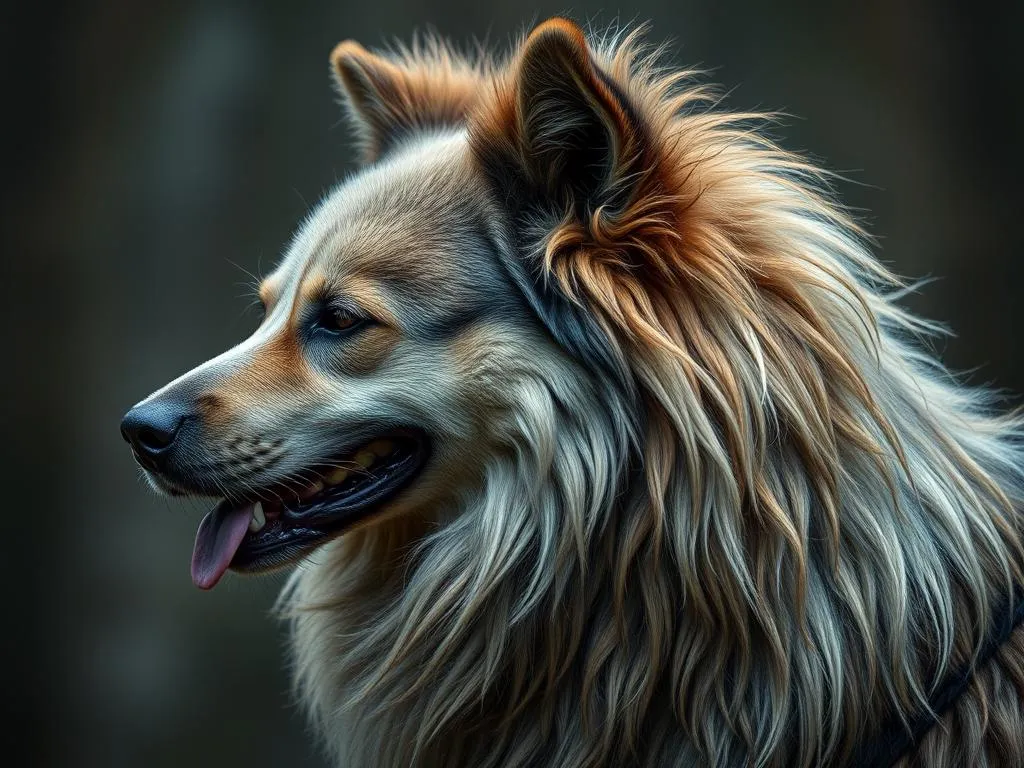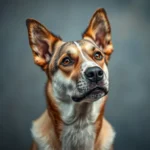
Dogs have held a significant place in various cultures throughout history, often symbolizing loyalty, protection, and companionship. Their presence in myths and legends provides a fascinating glimpse into how these beloved animals have influenced human beliefs and values across the globe. Understanding the roles of dogs in these narratives not only enriches our appreciation for them but also highlights the cultural values embedded within these stories. This exploration delves into the symbolism of dogs in mythology, their representation in different cultures, famous legendary dogs, their roles in folktales, and the impact of these mythical canines on modern culture.
The Symbolism of Dogs in Mythology
Dogs as Guardians
Throughout mythology, dogs have often been depicted as fierce protectors. Their loyalty and bravery make them natural guardians, a role that resonates in numerous myths. One of the most famous examples is Cerberus, the three-headed dog from Greek mythology. Tasked with guarding the gates of the Underworld, Cerberus prevented the souls of the deceased from escaping. His fearsome appearance, complete with a snake for a tail and a mouth that could unleash hellish growls, symbolizes the protective aspect of dogs in mythology.
Another notable guardian is Hecate’s dogs, which accompany the goddess of magic and witchcraft. In ancient texts, Hecate is often depicted with her spectral hounds, emphasizing the idea of dogs as protectors of the supernatural realm. These mythical dogs not only guard physical spaces but also embody the protective instincts attributed to canines.
Dogs as Companions
In many myths, dogs are celebrated not just for their protective qualities but also for their companionship. A poignant example is Argos, the faithful dog from Homer’s Odyssey. Argos waited for his master, Odysseus, for twenty years, demonstrating unwavering loyalty. When Odysseus finally returns home, Argos, now old and frail, recognizes him and passes away peacefully, symbolizing the deep bond shared between humans and dogs.
This theme of companionship reflects the importance of dogs in human life, as they provide emotional support and unwavering loyalty, making them beloved members of families and communities.
Dogs as Guides
In various cultures, dogs are seen as guides, particularly in the context of the afterlife. Anubis, the jackal-headed god of ancient Egypt, is perhaps the most famous canine figure in this role. Anubis was responsible for guiding souls to the afterlife and overseeing the weighing of their hearts against a feather to determine their fate. This reflects the belief that dogs possess a unique ability to navigate between worlds, serving as guides for both the living and the dead.
The concept of dogs as guides extends beyond mythology into spiritual beliefs, where they are often seen as protectors of the soul, leading individuals through life’s transitions.
Dogs in Different Cultures
Ancient Civilizations
The role of dogs in ancient civilizations was multifaceted. In Mesopotamia, dogs were revered as protectors and companions, often depicted in art and literature. They were believed to safeguard homes and were sometimes buried alongside their owners, reflecting their importance in both life and death.
In Ancient Egypt, dogs were highly regarded and associated with several deities, including Anubis. They were often depicted in tomb paintings and artifacts, highlighting their role as companions in the afterlife. The Egyptian belief that dogs could protect the deceased on their journey to the afterlife underscores their revered status in this ancient culture.
Asian Mythology
Asian mythology is rich with stories featuring significant dogs. In Okinawan folklore, the Shisa, a lion-dog creature, is believed to protect homes from evil spirits. These mythical beings are often depicted in pairs, with one facing inward to protect the home and the other facing outward to ward off threats. This duality emphasizes the role of dogs as guardians of both physical and spiritual realms.
In Chinese mythology, guardian dogs, such as the Foo dog, are often placed at the entrances of temples and homes. These stone lion-dogs symbolize protection and strength, showcasing the deep respect for dogs as guardians in Asian cultures.
Indigenous Mythologies
Indigenous cultures also celebrate the significance of dogs in their myths and stories. In many Native American traditions, dogs are seen as sacred animals that assist in hunting and provide companionship. The story of Coyote and the Dog illustrates the special bond between these two creatures, where the dog represents loyalty and teamwork.
In these narratives, dogs are often portrayed as mediators between humans and the spirit world, highlighting their importance in spiritual and everyday life.
Famous Legendary Dogs
Cerberus: The Three-Headed Guardian
Cerberus is perhaps the most iconic dog in mythology. As the guardian of the Underworld, Cerberus has a complex character. While he is often depicted as a fearsome beast, his loyalty to Hades, the god of the dead, showcases the duality of dogs as both protectors and companions. In various tales, heroes like Heracles must confront Cerberus to prove their worth, illustrating the idea that overcoming formidable challenges often leads to greater understanding and respect for the guardians of the unknown.
Fenrir: The Wolf of Norse Mythology
Fenrir is a prominent figure in Norse mythology, known as the monstrous wolf prophesied to bring destruction during Ragnarök, the end of the world. Fenrir’s story reflects the complex relationship humans have with wild beasts, embodying both fear and admiration. His eventual binding by the gods symbolizes humanity’s attempt to control nature, while his inevitable role in the apocalypse serves as a reminder of nature’s unyielding power.
Laelaps: The Uncatchable Dog
In Greek mythology, Laelaps was a magical dog gifted to the hero Cephalus. Known for its incredible speed, Laelaps could catch any prey it pursued. The irony of Laelaps’ fate is poignant; it was destined to chase the Teumessian fox, which could never be caught. This myth illustrates the themes of fate and inevitability, showcasing how even the most loyal and skilled dogs can be entangled in the complexities of destiny.
The Role of Dogs in Folktales and Fables
Dogs in Aesop’s Fables
Aesop’s fables often feature dogs as central characters, imparting moral lessons through their actions. One such tale is “The Dog and His Reflection,” in which a dog loses his bone while trying to grab a reflection in the water, teaching the lesson of greed and the importance of appreciating what one already has. These fables demonstrate how dogs embody human traits and serve as vehicles for imparting wisdom.
Global Folktales Featuring Dogs
Dogs also appear in various folktales around the world. In the tale of The Dog and the Wolf, a dog encounters a wolf and learns the value of loyalty and domestication over the harshness of the wild. Similarly, in Japanese folklore, the story of InuYasha blends elements of romance, adventure, and the supernatural, featuring a half-dog demon as the central character. These narratives not only highlight the roles of dogs in human life but also explore deeper themes of loyalty, sacrifice, and the balance between civilization and wilderness.
The Impact of Mythical Dogs on Modern Culture
Representation in Literature and Film
The legacy of dogs from myths and legends continues to influence modern storytelling. Films and literature frequently draw inspiration from these mythical canines, often portraying them as heroes or loyal companions. Characters like Hachiko and fictional portrayals of dogs in adventures echo the timeless themes of loyalty and companionship that have pervaded human storytelling for centuries.
Symbolism in Art and Fashion
In contemporary art and fashion, dogs from mythology are often depicted as symbols of strength, protection, and loyalty. Artists incorporate these motifs into their works, celebrating the rich history of dogs and their significance in various cultures. Fashion designers also pay homage to these symbols, using motifs inspired by mythical dogs in their collections, further solidifying their place in modern culture.
Cultural Festivals and Celebrations
Various cultures celebrate the legacy of dogs through festivals and events. For instance, the Day of the Dead in Mexico honors the spirits of loved ones, including their canine companions, highlighting the enduring bond between humans and dogs through life and death. Similarly, the Chinese New Year celebrations often include references to guardian dogs, symbolizing protection and good fortune for the upcoming year.
Conclusion
The exploration of dogs from myths and legends reveals their profound significance across cultures. From guardians and companions to guides and symbols of loyalty, dogs embody the values and beliefs of various societies. These narratives not only enrich our understanding of dogs but also reflect the deep connections humans have forged with these remarkable creatures throughout history. As we continue to share stories and celebrate the legacy of dogs, we foster a greater appreciation for their roles in our lives, both past and present.









